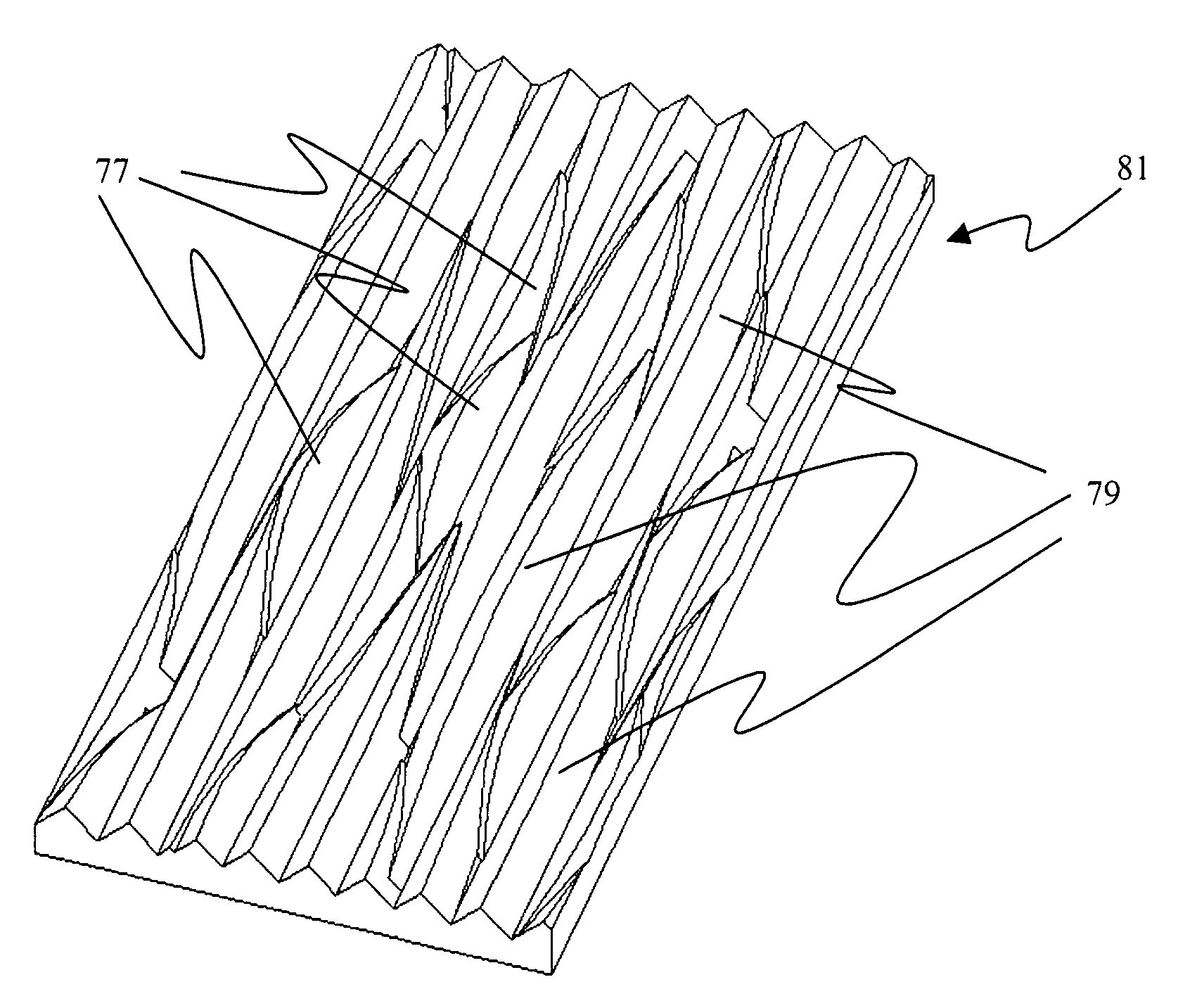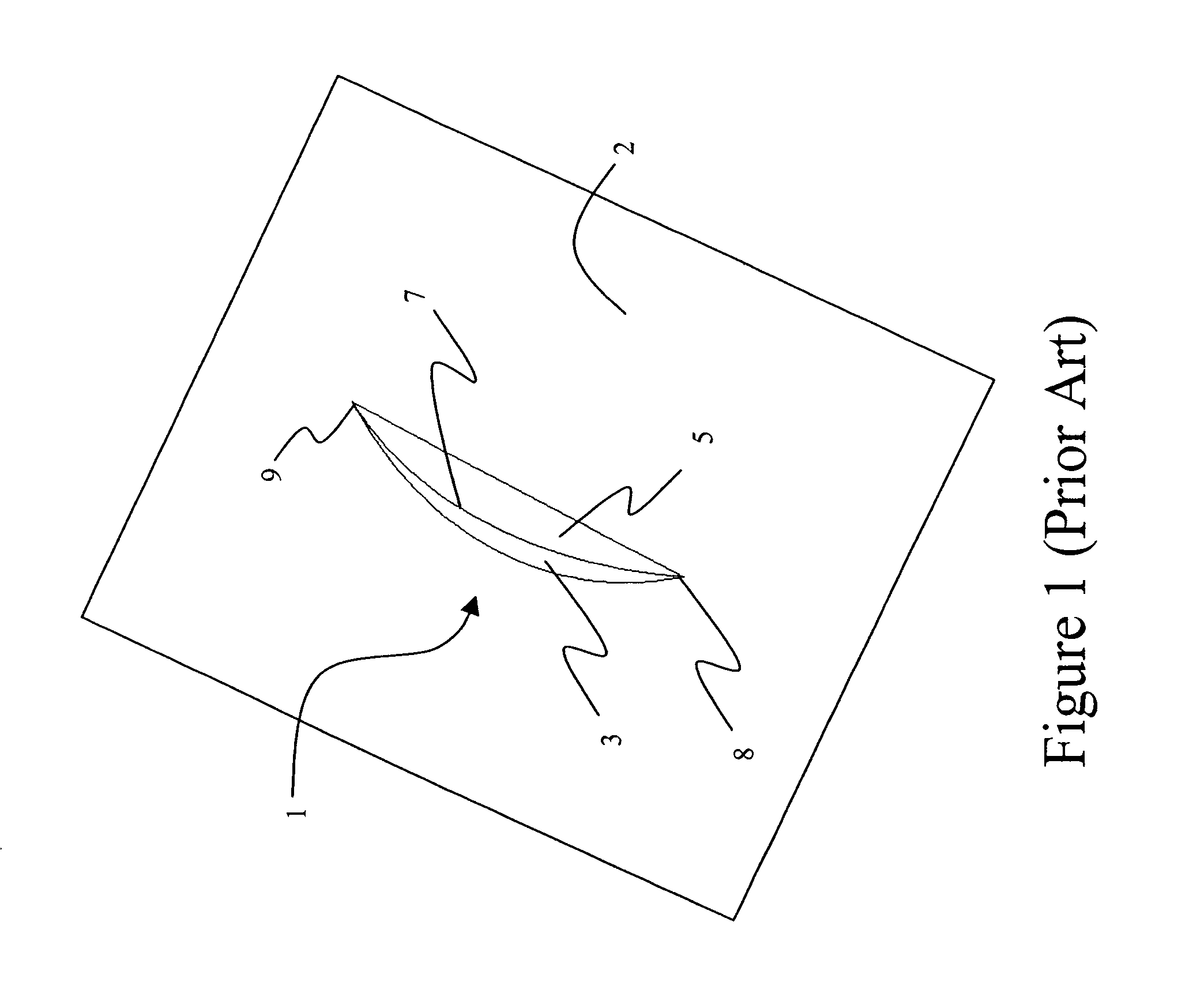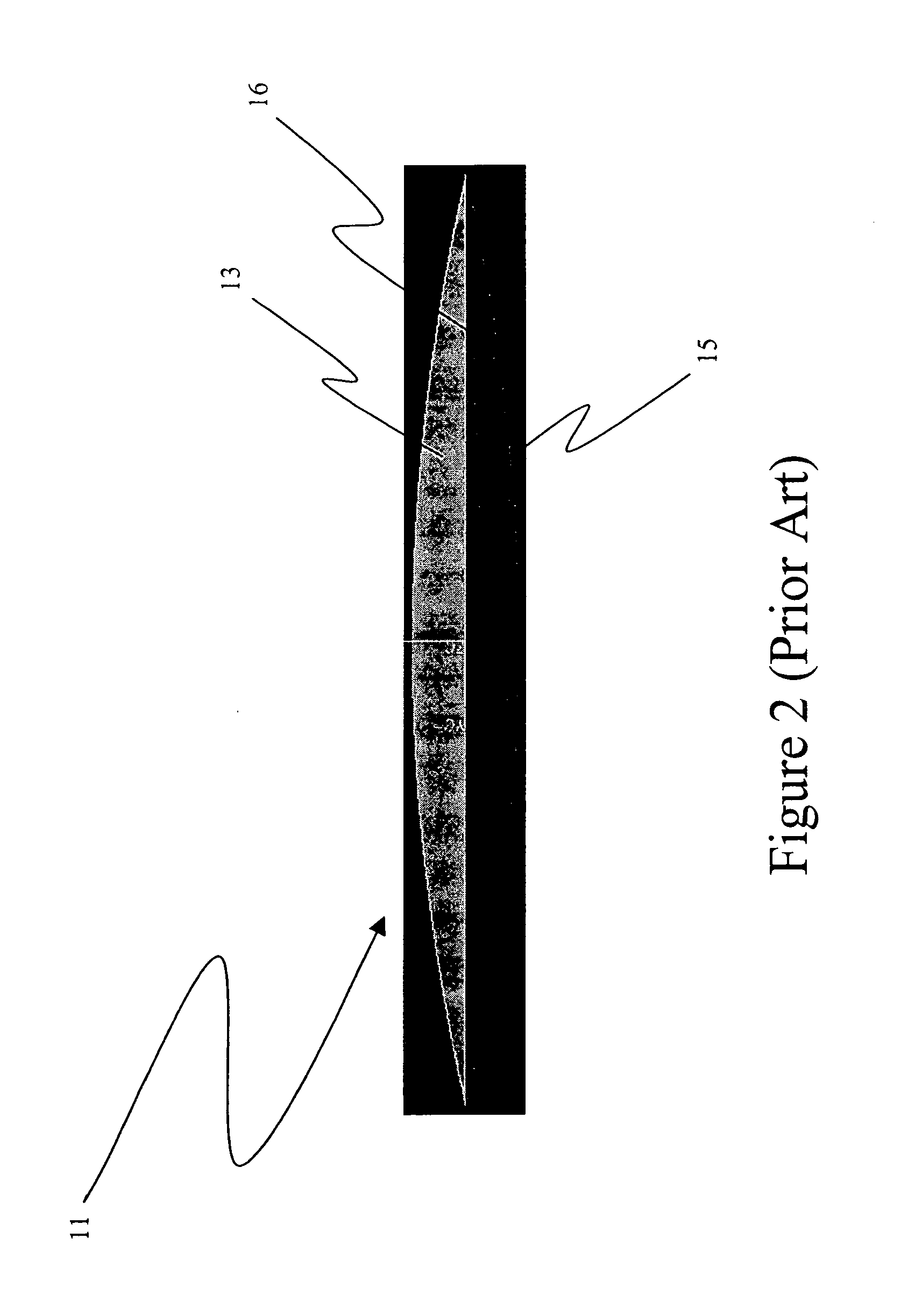Light redirecting film having varying optical elements
a technology of optical elements and light redirecting films, applied in lighting devices, lighting and heating apparatuses, instruments, etc., can solve the problems of reducing the brightness of the axis, the inability to adequately solve the moiré problem, and the inability to achieve the effect of reducing the moiré pattern, avoiding objectionable visual artifacts, and high quality requirements
- Summary
- Abstract
- Description
- Claims
- Application Information
AI Technical Summary
Benefits of technology
Problems solved by technology
Method used
Image
Examples
Embodiment Construction
[0034]Embodiments of the invention have numerous advantages compared to current light redirecting films. Two or more size and shape distributions of optical elements and their placement on the film produce high on-axis gain while significantly reducing Moiré. The light redirecting film of the invention has a diffuse or textured look and avoids objectionable patterns. The multiple shapes of optical elements mask cosmetic defects in and under the light redirecting film. A minor portion of optical elements extending above the rest of the elements provide space between the film and contacting surfaces, to avoid optical coupling at the ridges of most elements, avoid Newton rings, and protect the ridges of most elements from damage. The film of the invention provides a higher on-axis gain with multiple sized elements than a light redirecting film with only one sized element. These and other advantages will be apparent from the detailed description below.
[0035]Individual optical elements, ...
PUM
 Login to View More
Login to View More Abstract
Description
Claims
Application Information
 Login to View More
Login to View More - R&D
- Intellectual Property
- Life Sciences
- Materials
- Tech Scout
- Unparalleled Data Quality
- Higher Quality Content
- 60% Fewer Hallucinations
Browse by: Latest US Patents, China's latest patents, Technical Efficacy Thesaurus, Application Domain, Technology Topic, Popular Technical Reports.
© 2025 PatSnap. All rights reserved.Legal|Privacy policy|Modern Slavery Act Transparency Statement|Sitemap|About US| Contact US: help@patsnap.com



